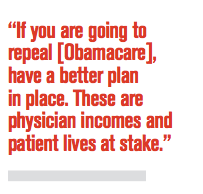- Revenue Cycle Management
- COVID-19
- Reimbursement
- Diabetes Awareness Month
- Risk Management
- Patient Retention
- Staffing
- Medical Economics® 100th Anniversary
- Coding and documentation
- Business of Endocrinology
- Telehealth
- Physicians Financial News
- Cybersecurity
- Cardiovascular Clinical Consult
- Locum Tenens, brought to you by LocumLife®
- Weight Management
- Business of Women's Health
- Practice Efficiency
- Finance and Wealth
- EHRs
- Remote Patient Monitoring
- Sponsored Webinars
- Medical Technology
- Billing and collections
- Acute Pain Management
- Exclusive Content
- Value-based Care
- Business of Pediatrics
- Concierge Medicine 2.0 by Castle Connolly Private Health Partners
- Practice Growth
- Concierge Medicine
- Business of Cardiology
- Implementing the Topcon Ocular Telehealth Platform
- Malpractice
- Influenza
- Sexual Health
- Chronic Conditions
- Technology
- Legal and Policy
- Money
- Opinion
- Vaccines
- Practice Management
- Patient Relations
- Careers
A short-term route to long-term disaster for patients and physicians
The message is if you can’t kill Obamacare, you can essentially break its spirit.
During his campaign, President Donald Trump vowed again and again to repeal and replace Obamacare.
To date, he hasn’t gotten Congress to go along with fulfilling that major promise. Instead, the president has chipped away at the structure of the law from the Oval Office. That includes his latest effort to allow new “short-term, limited duration” health plans for patients.
The only problem is that these plans are not short-term and not limited at all. In fact, they are a wolf in sheep’s clothing, promising a solution for escalating healthcare costs but with the potential to send prices skyrocketing due to sub-par medical coverage.

A proposed HHS rule would allow plans of up to a year to provide coverage for those transitioning between healthcare plans, such as when someone changes jobs or takes time off from school. HHS claims this is “increasingly important” with premiums rising and Obamacare requiring everyone to have coverage (or at least it does until next year, when the requirement goes away).
But as we’ve learned through the Obamacare insurance exchanges, individuals will often choose the cheapest plan thinking they will be without need for greater coverage on a year-by-year basis. That’s a risky gamble and a costly one for both consumers and the healthcare industry.
It’s also worth noting that these short-term plans are not required to comply with federal guidelines for individual coverage. So remember all that debate last summer when the Senate wanted to pass its own healthcare plan, stripping plans of coverage for services like chemotherapy, mental health, and substance abuse treatment?
Here, the president can weaken individual plans with the stroke of a pen rather than an act of Congress.
The message is if you can’t kill Obamacare, you can essentially break its spirit.
So if this initiative goes forward, the insurance marketplace will suddenly include cheap, bare-bones-coverage plans that will most likely pull healthier individuals out of ACA plans and drive up premiums for other insurance plans. And imagine the logistical nightmare for practices that have to track these plans. Groups like the American College of Physicians have already expressed concerns about what these plans will do to the marketplace.
I understand that the president made a promise. I know Republicans have been seething for nearly a decade because Obamacare became the law of the land. But if you are going to repeal it, have a better plan in place. There are physician incomes and patient lives at stake. It’s time to put politics aside and be practical for once when looking at major healthcare changes like this.
Keith L. Martin is editorial director of Medical Economics. Do you agree with President Trump’s handling of Obamacare? Tell us at medec@ubm.com.
